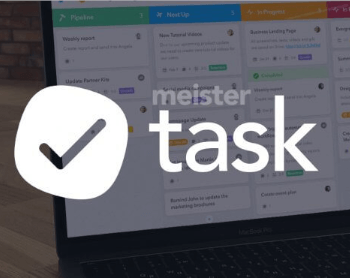UX Designers and UX Researchers have only one wish. And that is that their products are designed for solving the right problem for their users. Interestingly enough, many UX design teams start their research with little direction as to what problem they want to solve. And without effectively defining the problem, their design often misses the mark – costing them both time and money. That is why creating a UX problem statement is so crucial. Not only do problem statements give designers a much needed focus, but also enable them to ‘cut through the noise’ and pinpoint which solutions are the best.
In reality though, creating an effective problem statement is far more complex, especially with input and suggestions coming from all directions. And then of course, there’s finding a balance between business problems, design problems and user problems. So how can UX designers and researchers streamline this process and successfully solve the right problems? And better yet, how does user feedback fit in?
In this post, we will walk you through the following:
- What is a UX problem statement?
- Three Kinds of UX Problems
- Gathering data to define your problem statement
- Integrating user feedback into UX problem statements
- Grouping all UX data together
- Align problem statements with the business for a successful solution
What is a UX problem statement?
By definition, a UX problem statement is a succinct and actionable description of the problem that needs to be solved. It’s used as a scoping device which enables UX teams to focus on the problem they need to explore. In other words, it defines UX purpose and direction. Problem statements are also used as communication tools. They help UX teams get stakeholders and other internal parties on board with the project.

And despite our tendency to believe UX problems revolve solely around design problems, there are actually several different kinds of problems we must factor in, in order to come up with well-rounded solutions. Let’s take a look at each of these individually…
Three Kinds of UX Problems
When we’re talking about UX problems we’re not just talking about UX design. UX encompasses not only design but also business needs and user needs. Therefore, you might need to come up with different UX problem statements that address each of these angles.
1. Business Problems
When crafting a problem statement for a business problem, you must consider what the business wants to get out of the solution. This can be, for example, increasing conversions, reducing customer tickets, etc. Note: these are often long-term goals.
2. Design Problems
Design problems work a bit differently. These statements will address challenges to the designer. For example, simplify the decision making process within a certain step of the process.
3. User Problems
And lastly, if not most importantly, the user problems. User problem statements address what the user wants. For example, allow the user to get set up with the trial faster.
Now that we’ve identified which problems can be addressed with problem statements, let’s move on to the first step of the process: gathering and grouping data that will backup your decisions.
Gathering data to define your problem statement
Contingent upon time, budget and resources, the process of gathering UX data varies from company to company. Some leverage user interviews while others gather data from web analytics tools such as Google Analytics. The UX research methods you choose to use are up to you. One piece of advice though? Make sure you gather both quantitative and qualitative data.
Now let’s take a closer look at some of the options you have for gathering UX data…
Web analytics
Often UX researchers will start with the quantifiable part of the research process, meaning they will let the numbers do the initial work. This type of data will help interpret what users are doing on your website and give researchers the insights they need to test further. These insights alone, however, aren’t typically sufficient.
User interviews / research
The most commonly used method is conducting a series of user interviews. And even these vary depending on the kind of insights your UX team seeks to obtain. For example, there are contextual user interviews in which the researcher observes the user in a natural setting and learns how they navigate or use a product. And then there are one-on-one discussions with users whereby the UX researcher will be given the opportunity to learn how a user works, i.e. what their desires, experience and general attitude toward the product are.

Stakeholder interviews
Stakeholder interviews – not to be confused with user interviews – are one-on-one discussions with those that have vested interest in your product. These are typically your high-level employees who might be able to offer useful advice about your product.
Interdepartmental meetings
A less formal research method, but useful nonetheless are interdepartmental meetings. Each of the departments within an organisation have a different angle of insight when it comes to what the product might need. Customer Support wants to know if the UX team will address one single feature that all the users are complaining about, upper management wants to see the newest feature launch happen (yesterday), and development wants to share the latest bug reports! There’s a lot of insight that can be obtained from these meetings.

An interview with an Expert UX Researcher
See how Mopinion’s UX Researcher gathers UX data
As you can see there are plenty of UX research methods and this list is far from exhaustive. This is just to give you an idea of the data you’ll ultimately need to use and integrate with your user feedback.
Speaking of which…As you might have noticed, we left out one important type of data: user feedback. That’s because we believe it deserves a bit more attention.
In fact, user feedback is perhaps the most important feedback you’ll receive in the UX design and research process. The reason being is that the user is the centre of everything you do as a UXer. Therefore, it requires a special approach.
Integrating user feedback into UX problem statements
User feedback is unique in that it gives your users the opportunity to provide you with feedback wherever and whenever. Additionally, there are no pressures of user interviews, and when users come across something that they think needs improvement, user feedback lets them do just that.
User feedback also helps UX designers define why something is a problem for users. Combining this (qualitative) feedback data with insights gathered from – for example – quantitative data sources such as Google Analytics or even heatmapping tools enables you to get the full picture when it comes to the user experience.

How MeisterTask transformed their UX with user feedback
Check out this customer story and see how feedback can help shape your UX
Having access to customer insights puts you as a UX Designer at a competitive advantage. It helps you prioritise and address issues that surface, putting you one step closer to creating your problem statement.
That being is, it’s important to mention that user feedback alone isn’t the sole data needed for prioritising your roadmap and creating good problem statements. If you did that, you might end up adding features that are costly and don’t provide as much value as you’d hoped, simply because the user thought it would be a good idea.
No, this data must be effectively funnelled into your collection of data sources…
Grouping all UX data together
Now here’s the tricky part. You’ve now collected tons of data from various different sources which may or may not have been gathered using several different tools. How in the world are you going to bring it all together?
Let’s start with something you’re probably familiar with: the sticky note. UX designers love sticky notes and for a good reason. They make UX analysis easy! Create an online whiteboard that will enable you to gather all of your findings in one place.
Start by analysing each individual data source separately. So for example, record your most important findings from user interviews and add these to your whiteboard under the category ‘User Interviews’. Do the same for all of your data sources (i.e. web analytics, stakeholder interviews, interdepartmental meeting notes, etc) until you have all of your data sources and most valuable insights written out.

For your user feedback data this process is simple thanks to user feedback solutions – like Mopinion – that offer built-in analytics. With a solution like Mopinion, you can easily identify trends in the data and deep dive into the most interesting and relevant feedback items. Uniquely, you can also push this data directly to your task or project management tools.
Once you’ve got all of your insights in one place, it’s time to group the data.
So let’s say you have a series of insights that focus on the ‘User Account’ section of your product. These can be categorised and grouped together. Because these are all separate types of issues, it will be easier to draw up problem statements having these items all in one place.
Align problem statements with the business for a successful solution
The last step in the process is taking these problem statements and aligning them with your business goals. Typically business goals are written out in the form of metrics. That means you’ll need to take your problems and somehow align them with the goals and metrics of your organisations. Doing this will not only provide more clarity as to why an action must be carried out, but it will also get you more support from the business. After all, UX isn’t just about the user but also the business.
Best of luck in your UX efforts!
Ready to see Mopinion in action?
Want to learn more about Mopinion’s all-in-1 user feedback platform? Don’t be shy and take our software for a spin! Do you prefer it a bit more personal? Just book a demo. One of our feedback pro’s will guide you through the software and answer any questions you may have.







